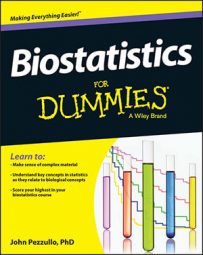In biostatistics, when comparing paired measurements (such as changes between two time points for the same subject) using a paired Student t test, the effect size is expressed as the ratio of Δ (delta, the mean change) divided by σ (sigma, the standard deviation of the changes). Another, perhaps easier, way to express the effect size is by the relative number of expected subjects with positive versus negative changes. (These ratios are shown below each curve.)
Each chart in the following figure shows a bell curve indicating the spread of changes, along with the effect size (Δ/σ), the ratio of positive to negative differences, and the required number of analyzable subjects (each subject providing a pair of measurements). Pick the chart that looks like an important amount of change (relative to the vertical line representing no change). For example, the middle chart corresponds to a mean change that is three-fourths as large as the standard deviation of the changes, with about 3.4 times as many subjects increasing as decreasing. If this looks like an important amount of change, then you need 16 pairs of measurements (such as 16 subjects, each with a pre-treatment and a post-treatment value).
![[Credit: Illustration by Wiley, Composition Services Graphics]](https://www.dummies.com/wp-content/uploads/382142.image0.jpg)
For other Δ/σ values, use this rule of thumb to estimate sample size: You need about 8/(Δ/σ)2 + 2 pairs of measurements.

